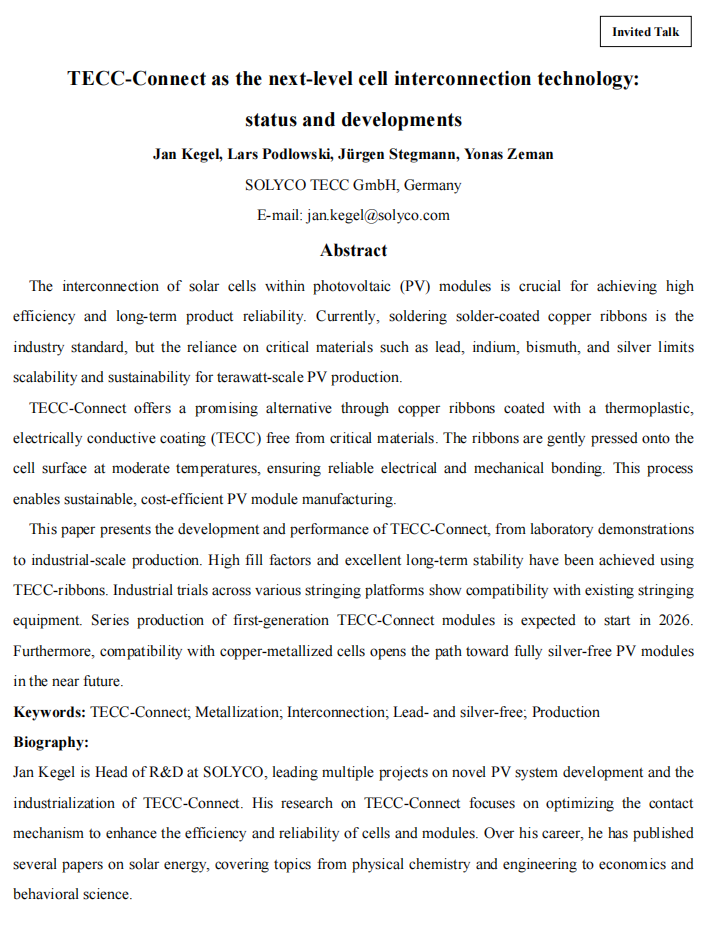| TECC-Connect as the next-level cell interconnection technology: status and developments【Jan Kegel】 |
| 发布时间:2025-10-20 | 浏览次数:122 |
status and developments Jan Kegel, Lars Podlowski, Jürgen Stegmann, Yonas Zeman SOLYCO TECC GmbH, Germany E-mail: jan.kegel@solyco.com Abstract The interconnection of solar cells within photovoltaic (PV) modules is crucial for achieving high efficiency and long-term product reliability. Currently, soldering solder-coated copper ribbons is the industry standard, but the reliance on critical materials such as lead, indium, bismuth, and silver limits scalability and sustainability for terawatt-scale PV production. TECC-Connect offers a promising alternative through copper ribbons coated with a thermoplastic, electrically conductive coating (TECC) free from critical materials. The ribbons are gently pressed onto the cell surface at moderate temperatures, ensuring reliable electrical and mechanical bonding. This process enables sustainable, cost-efficient PV module manufacturing. This paper presents the development and performance of TECC-Connect, from laboratory demonstrations to industrial-scale production. High fill factors and excellent long-term stability have been achieved using TECC-ribbons. Industrial trials across various stringing platforms show compatibility with existing stringing equipment. Series production of first-generation TECC-Connect modules is expected to start in 2026. Furthermore, compatibility with copper-metallized cells opens the path toward fully silver-free PV modules in the near future. Keywords: TECC-Connect; Metallization; Interconnection; Lead- and silver-free; Production Biography: Jan Kegel is Head of R&D at SOLYCO, leading multiple projects on novel PV system development and the industrialization of TECC-Connect. His research on TECC-Connect focuses on optimizing the contact mechanism to enhance the efficiency and reliability of cells and modules. Over his career, he has published several papers on solar energy, covering topics from physical chemistry and engineering to economics and behavioral science.
|







